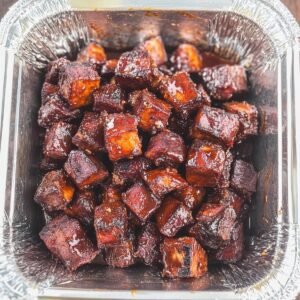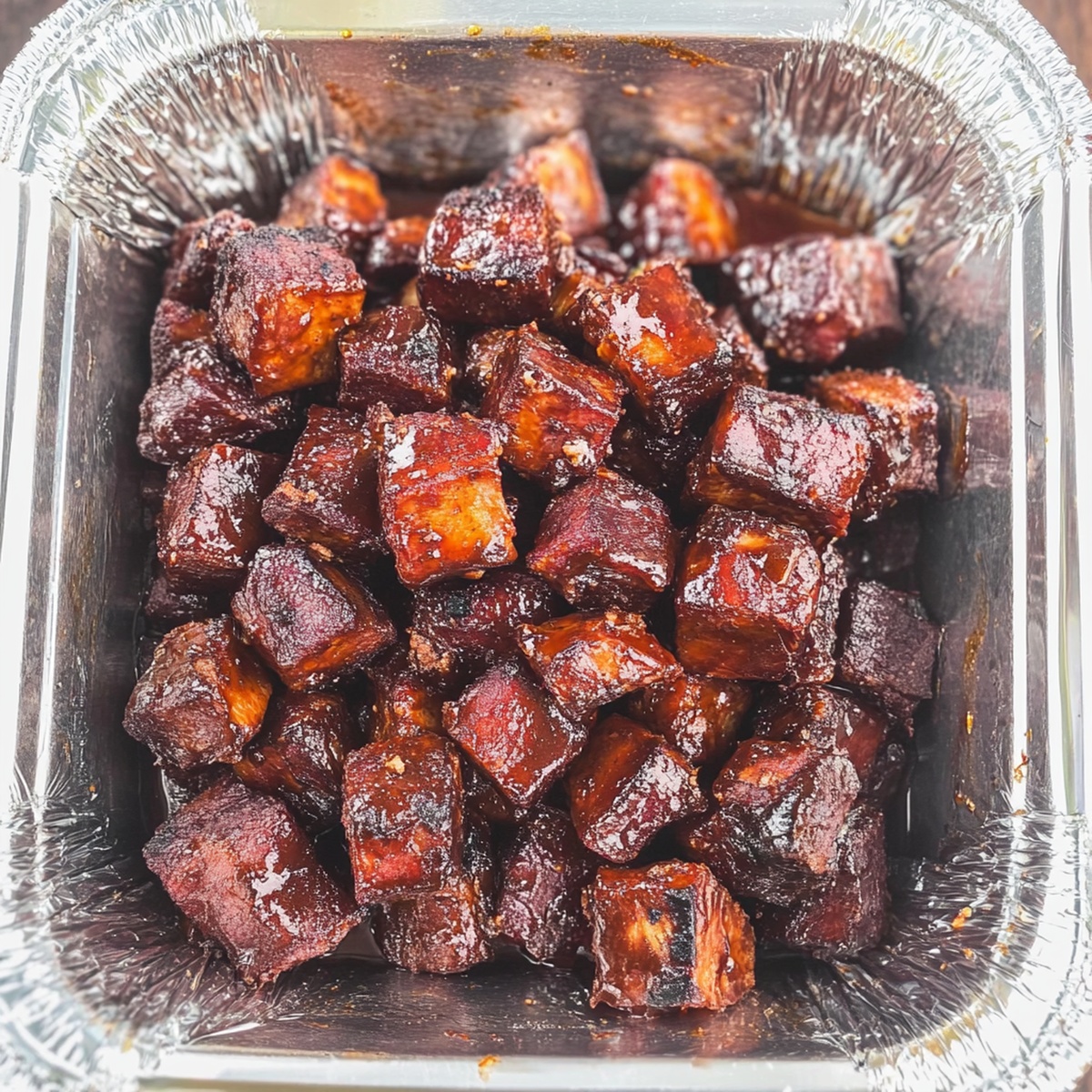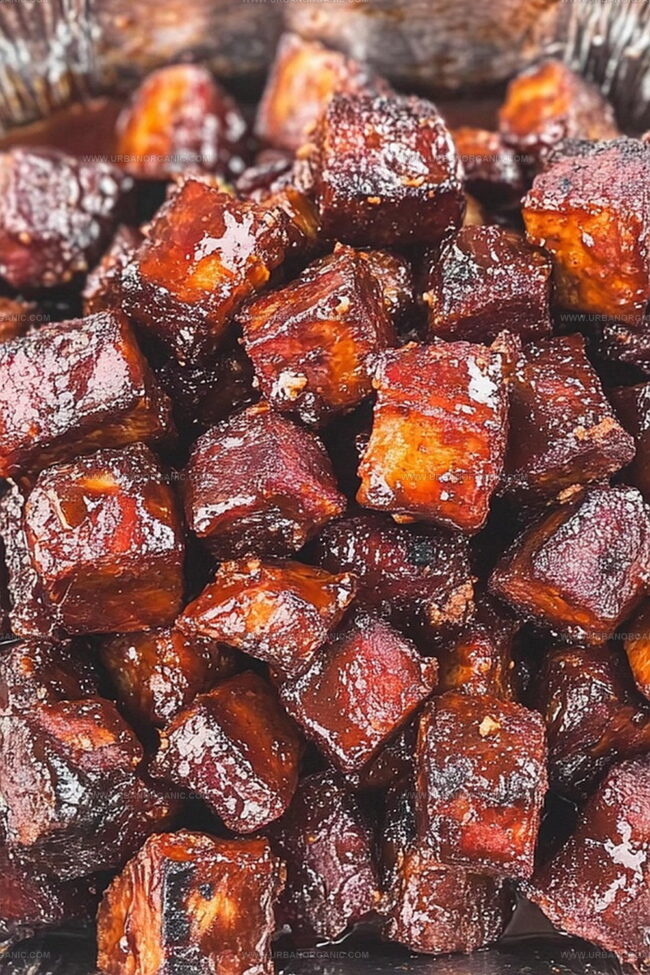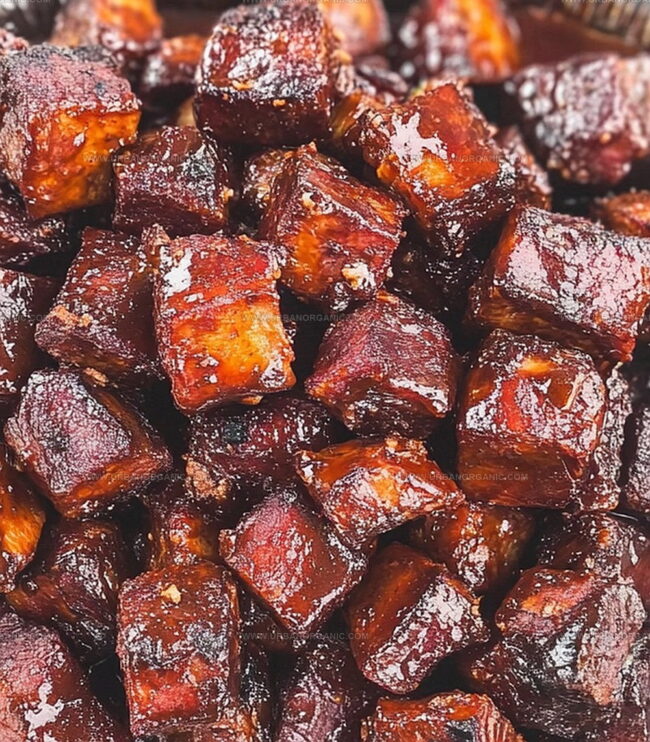Sizzling Poor Man’s Burnt Ends Recipe: Affordable BBQ Magic
Crafting a mouthwatering poor man’s burnt ends recipe doesn’t require fancy equipment or professional chef skills.
Smoky, tender chunks of beef brisket transform into an irresistible barbecue delicacy right in your kitchen.
Weekend cooks can easily master this delectable technique with simple ingredients and basic tools.
Chuck roast becomes the star ingredient, promising incredible flavor without breaking the bank.
Backyard grill masters and home cooking enthusiasts will absolutely love this budget-friendly twist on classic barbecue.
Slow-cooking and careful seasoning guarantee a taste that rivals expensive restaurant offerings.
Don’t miss the chance to impress everyone at your next gathering with these incredibly succulent meat morsels.
Why Poor Man’s Burnt Ends Work for Budget BBQ Nights
What to Use for Burnt Ends on a Budget
Main Protein:Seasoning Blend:Moisture and Finishing Ingredients:Cooking Poor Man’s Burnt Ends on the Grill
Step 1: Prep the Beef
Cut chuck roast into 1-2 inch cubes. Drizzle olive oil over the cubes and toss until evenly coated.
Step 2: Create Flavor Explosion
Combine in a mixing bowl:Generously coat each beef cube with the spice mixture, ensuring complete coverage.
Step 3: Slow and Low Cooking
Preheat smoker or grill to 250°F. Place seasoned beef cubes on the cooking surface, using indirect heat. Cook uncovered for 2-3 hours until internal temperature reaches 165°F and a dark bark forms.
Step 4: Saucy Transformation
Transfer beef cubes to a foil pan. Add:Gently toss to coat. Cover with foil and return to grill for 1-1.5 hours, targeting an internal temperature of 200-205°F.
Step 5: Caramelize and Crisp
Remove foil and cook for 15-20 minutes, stirring occasionally. Allow sauce to thicken and meat to develop a beautiful caramelized exterior.
Tips to Nail Texture and Sweetness
Best Way to Store and Reheat Burnt Ends
Great Sides to Go with Burnt Ends
Fun Variations for Burnt Ends Lovers
Burnt Ends FAQs You’ll Want to Read
Look for a dark bark and check the internal temperature, which should reach 165F during the initial smoking phase.
Chuck roast works best due to its fat content, but you can try brisket or beef shoulder as alternative options.
A sweet and tangy sauce like Kansas City-style or a homemade BBQ sauce complements the meat’s rich flavor perfectly.
No, you can use a grill with indirect heat as an alternative cooking method if you don’t have a smoker.
Print
Poor Mans Burnt Ends Recipe
- Total Time: 5 hours 15 minutes
- Yield: 8 1x
Description
Smoky, tender poor man’s burnt ends deliver barbecue magic from humble chuck roast, slow-cooked to succulent perfection. Kansas City-style comfort emerges, promising rich flavor and melt-in-mouth deliciousness you’ll savor with pure culinary joy.
Ingredients
Meat:
- 2–3 pounds (0.9–1.4 kilograms) chuck roast
Spices and Seasonings:
- 1 tablespoon smoked paprika
- 1 teaspoon garlic powder
- 1 teaspoon onion powder
- ½ teaspoon chili powder
- 2 tablespoons brown sugar
- Salt, to taste
- Pepper, to taste
Cooking and Sauce Ingredients:
- 2 tablespoons olive oil
- 1 cup BBQ sauce
- 2 tablespoons honey or brown sugar
- Foil pan or heavy-duty aluminum foil
Instructions
- Prepare the chuck roast by cutting into uniform, bite-sized cubes, ensuring each piece is evenly coated with a light drizzle of olive oil for optimal seasoning adhesion.
- Create a robust spice blend by thoroughly mixing brown sugar, paprika, garlic powder, onion powder, chili powder, salt, and pepper in a mixing bowl.
- Generously coat each beef cube with the spice mixture, massaging the seasonings into the meat to create a comprehensive flavor profile.
- Position the seasoned meat cubes on a smoker or grill set at a low, consistent temperature of 250F, utilizing indirect heat to promote gradual cooking.
- Monitor the meat as it develops a rich, dark bark over approximately 2-3 hours, watching for the internal temperature to reach 165F.
- Transfer the smoked meat cubes into a foil pan, introducing BBQ sauce and honey to enhance moisture and sweetness.
- Seal the pan with foil and return to the heat, allowing the meat to continue tenderizing until it reaches an internal temperature of 200-205F.
- Remove the foil and allow the sauce to caramelize, stirring periodically to ensure even coating and prevent burning.
- Once the sauce has thickened and the meat exhibits a glossy, sticky exterior, remove from heat and let rest briefly before serving.
Notes
- Meat Selection Matters: Choose a well-marbled chuck roast with good fat content to ensure juicy, tender burnt ends that melt in your mouth.
- Cube Consistency is Key: Cut beef cubes as uniformly as possible to guarantee even cooking and prevent some pieces from drying out while others remain undercooked.
- Customize Spice Blend: Adjust the seasoning mix to suit your taste preferences or dietary needs by reducing salt for low-sodium diets or using smoked paprika for extra depth.
- Low and Slow Technique: Patience is crucial; maintain a consistent low temperature to break down tough connective tissues and develop rich, complex flavors in the meat.
- Sauce Flexibility: Experiment with different BBQ sauces or make a homemade version to personalize the final flavor profile of your poor man’s burnt ends.
- Prep Time: 15 minutes
- Cook Time: 5 hours
- Category: Dinner, Appetizer, Snacks
- Method: Grilling
- Cuisine: American
Nutrition
- Serving Size: 8
- Calories: 460
- Sugar: 8 g
- Sodium: 800 mg
- Fat: 22 g
- Saturated Fat: 16 g
- Unsaturated Fat: 6 g
- Trans Fat: 0 g
- Carbohydrates: 38 g
- Fiber: 3 g
- Protein: 28 g
- Cholesterol: 70 mg




Jessica Martinez
Pastry Chef & Recipe Developer
Expertise
Organic Baking Techniques, Gluten-Free Recipe Development, Southwestern Dessert Specialties, Food Styling and Photography
Education
Santa Fe Community College (SFCC)
Jessica brings the sweet side to Urban Organic with her passion for baking and love for the Southwest. She trained at Santa Fe Community College and has built a career creating beautiful, gluten-free, and organic desserts that feel both nostalgic and new.
She believes baking should be fun, creative, and open to everyone, no matter your diet or skill level. Jessica’s recipes are simple enough to follow, but special enough to remember.